
How to Wake Up Your Students: Getting Started in Active Learning
The Teaching Professor Conference May 21-22, 2010 How to Wake Up Your Students: Getting Started in Active Learning Ed Neal, Ph.D. ed_neal@unc.edu Professional Consultant in Higher Education Editor, Journal of Faculty Development ©Ed Neal, 2010 Active Learning My definition of active learning: “Active learning” refers to educational methods in which students are involved in higher-order thinking (analysis, synthesis, evaluation). The term therefore primarily reflects what is going on in a student’s mind, whether or not the body (or the mouth) is physically active. The single most important reason for using active learning approaches in your teaching is to foster critical and reflective thinking. Remember, however, that critical thinking requires knowledge of relevant facts, and students must acquire background knowledge at the same time as they develop critical thinking skills. Examples of low-risk, low-tech active learning strategies (requiring minimal preparation): Quizzes Interactive Lecturing Questioning (structured) In-Class Writing Exercises Discussions Convergent Divergent Problem Solving Classroom Assessment Techniques (CATs) Case Studies (mini) Pair Work Examples of more complex strategies (requiring more planning and preparation): Student-Led Discussions Debates (formal, full-class) Role playing Case studies (teacher-led) Case studies (small-groups) Simulations (human) Simulations (computer-based) Games (human) Games (computer-based) Problem-based learning (medical model) Problem-based learning (non-medical applications) Experiential learning (fieldwork) Experiential learning (service learning model) 2 Research on Teaching and Learning: A True-False Test Many empirical studies have been conducted on teaching and learning in higher education. However, many instructors are unaware of the results of this research and the implications for teaching. The following items are based on these studies: T F 1. Studies of classes taught via the traditional lecture (in which the teacher talks for the entire period) indicate that students can maintain their attention for about 40 minutes. T F 2. Periodically pausing during a lecture for two minutes and allowing students to compare notes significantly increases students’ recall of the material. T F 3. The average student takes notes at a rate of twenty words per minute. T F 4. Because the teacher serves as a role model, lectures are effective for teaching values associated with the subject matter. T F 5. The average time that instructors wait for students to answer questions is 2.5 seconds. T F 6. Current research indicates that students spend about 22 hours outside of class studying, reading, and doing homework. T F 7. Research shows that using PowerPoint in lectures improves student performance in the course. T F 8. On average, students remember 10% of what they hear, 20% of what they read, 30% of what they see, and 70% of what they say or write. 3 Preconditions for Active Student Involvement Preparation • • • • Change student expectations on the first day of class. Learn as much as possible about your students as soon as possible. Require out-of-class assignments that prepare students for active learning in class. Prepare written instructions or work sheets for the exercises (most of the strategies in today’s workshop don’t require written instructions, but more complex exercises do). Notes: Motivation • • • Tell students the educational purpose of the exercise—What are the learning goals? Create challenging exercises—easy work is boring. Require students to summarize what they have learned at the end of the exercise. Notes: Absence of Fear • • • • Strive for a classroom climate in which risk-taking is rewarded and not penalized. Insure that students know each other. Reward students for their participation through praise and verbal approval. Practice “instructional immediacy” (smile, look into the eyes of students, use gestures, move around the classroom, use student names, etc.) Notes: 4 Sample Structure of an Interactive Lecture University of Arizona College of Medicine, Office of Educational Development www.azmed.medicine.arizona.edu/curriculum/teams/learning/files/iLecture.doc 1. Outline the objectives and segments for the day’s lecture : Establish what the students are expected to learn from the lecture, and how the lecture topics will be divided into segments. This can be accomplished by briefly talking through a slide that lists the objectives and lists the lecture’s major topics. It helps orient the students to what they will be learning and how. Time: 3-5 min 2. ‘Mini-Case’ : When possible, begin the lecture with a realistic mini-case involving a concept that will be discussed that day. Include a brief question that requires the use of a key concept. Students will each work on the question then report their answers. Mini-cases are more effective when students are presented the case beforehand (i.e. in the notes or at the end of the previous lecture) and asked to develop their ideas before class. Time: 3-5 min 3. General Lecture Segment : This segment should cover either a basic concept or a single point with examples. End with a brief summary and transition to the next section. Time: 10-15 min 4. Change-up Activity : Provide a brief breakout moment designed around a thought question that concerns material just presented and/or builds on concepts presented in previous lectures. (Examples of change-up activities are discussed on pages 6-7.) To ensure active participation, build in an expectation that each student will be held accountable for completing the activity. For example, stipulate that students will discuss their answers with peers, fill in their own copy of a chart, cast a vote for the answer, or potentially be called on at random to explain their reasoning. Time: 5 min 5. General Lecture Segment : This lecture segment should cover another basic concept or a single point with examples. End with a brief summary and transition to the next section. Time: 10-15 min 6. Return to the mini-case : Allow the students to discuss and vote again on further developments of the case, using their vote as a springboard into a brief discussion of application of that lecture’s key concepts. Time: 3-5 min 7. Pose Questions : Use the final minutes to pose one or two questions (of a style/format similar to those used on exams). Probe students’ understanding of the material presented in the lecture. This provides valuable feedback for both the students and the lecturer. Time: 3-5 min 5 Interactive Lecturing The “Sine Wave” Metaphor Think of the peaks of the wave as the active learning portions of the lesson and the low points as times when students are passive. There is no “ideal” cycle frequency. However, the active learning peak can be sustained for much longer than the passive portion. 6 Questioning Strategies Using Bloom’s Taxonomy as a Model Knowledge: What is a streambed, channel and floodplain? Comprehension: Describe the problems a homeowner would face living in the Tangipahoa floodplain? Application: Illustrate an "ecologically safe" method which could be designed for building a bridge over the Tangipahoa River. Analysis: What information would you present to the local historical committee to nominate the Tangipahoa River as a "national" scenic river? Synthesis: How would you design a waste flow apparatus to demonstrate how sand, silt, cobbles, gravel and mud fall out. Evaluation: What criteria would you use to allow building along the Tangipahoa River? Using Basic Thinking Skills as a Model Observing and Recalling • What did/do you notice about this _____ ? • What did/do you feel/see/hear/smell _____ ? • What do you remember about ____ ? • What did you find out about _____ ? • How did _____ ? Relationships, Summarizing, Organizing, and Retelling • Tell me in your own words how _____ ? • What's another way we could say/explain/express that? • How are these similar/different? • Which ones do you think belong together? Why do you think these belong together? Why don't the others belong? • What happened to cause _____ ? • What things/events lead up to _____ ? Predicting, Inferring, and Anticipating • What do you think are some reasons/causes that _____ ? • What feeling do you think made _____ act as he/she did? • If _____ were changed, what do you think would have happened/would not have happened? Why do you think it would have happened? Why do you think it wouldn't have happened? • What do you think happened before/yesterday/earlier/when _____ ? • Judging from the title/picture, what do you think is about/is going to happen? 7 In-Class Writing Exercises Short, in-class writing exercises can yield many benefits, especially if they are part of an overall active learning strategy in a course. Generally, writing engages students actively in the process of learning, and in-class exercises require students to focus meaningfully on the course material during the class period. These exercises also provide practice in exercising specific intellectual skills, and permit frequent, informal tests of understanding. In-class writing exercises are not usually graded, but they can be collected and analyzed by the teacher to assess how well the class is mastering particular concepts. Examples: Students can be asked to write a short paragraph to: • • • • • • • • • • summarize the reading assignment for the day's lesson (comprehension) define a concept (knowledge, comprehension) apply a course principle to their own experience (application) explain the parts of a complex concept (analysis) compare concepts from today's lesson to those in previous lessons (analysis, synthesis) translate a formula into a word problem (comprehension, application) relate a news event to concepts in the course (comprehension, application) evaluate an artistic performance (analysis, evaluation) develop a list of examples that illustrate a course concept (comprehension). summarize the main points of the lecture (comprehension) The teacher can use these exercises in a variety of ways: The teacher might simply call on individual students to read their paragraphs and use their responses as the basis for a class discussion. Since every student has written something, the teacher can call on any student in the class, which means that students who don't normally participate will have an opportunity to contribute to the discussion. Students might also be asked to discuss what they have written with a partner, focusing on their differences (and the reasons behind the differences). They could also be asked to develop a joint statement that represents the best elements of their individual responses. The teacher might call on pairs of students to report their results and use their responses as a springboard for a discussion or ask pairs to form groups of four and repeat the process of comparing and developing new answers before sharing the results. A variant on these short exercises is sometimes practiced in quantitative courses (e.g., calculus, physics, statistics, accounting) when the teacher asks students to write out the steps they took in solving a problem. Students can then compare their answers in pairs and ask the teacher questions for clarification, or the papers can be collected and analyzed by the teacher for clues to student difficulties in solving particular kinds of problems. In another variation, students work in pairs to solve a problem, with one student describing the steps and the other writing them down. Both techniques have been shown to improve student performance in problem-solving. 8 Leading Discussions http://www.ou.edu/idp/tips/ideas/quick13.html One alternative to lecturing is leading discussions, but most common problem with discussions is that they are inadequately planned. 1. Decide on the Purpose of the Discussion Always have a clear purpose for asking students to engage in a discussion. Ask yourself: What specifically do I want students to have learned by the end of the discussion? Share these learning goals with the students as you start the discussion. Although there are many kinds of discussions, three common types include: (a) convergent discussions - seeking the best answer to a question. Examples: How long will it take for this object to fall 50 feet? What is the best-documented argument in this article? (b) divergent discussions - exploring or seeking multiple meanings. Examples: What groups are affected by this policy? Who would you expect to oppose this idea (or support it)? (c) problem solving discussions- through a series of discussions, the purpose may be to have the students learn a general problem-solving procedure. For example: How would you define the problem? What data do we need to understand the problem (or to propose solutions)? How can we assess the alternative solutions? 2. Getting the Discussion Started • Students must have a common experience, e.g., have read the same material, observed the same phenomenon, etc. • Write out the questions you will use to open, maintain, and conclude the discussion. • Ask students to write an answer to a question before you ask them to share their individual thoughts with others. • Consider using a sequence of activities rather than individual Q & A: individual writing; small group discussion; whole class discussion. This combination increases student participation enormously. 3. Maintaining the Discussion • Generate a repertoire of questions to use to keep the discussion going • Ask a student to argue against his or her own opinions or beliefs. • Keep a "map" of the discussion on the board, i.e., conclusions reached, issues that have emerged, areas of disagreement that remain, etc. • Summarize these elements from time to time. • Encourage non-participating students to become involved. 4. Concluding the Discussion • Summarize (or better, have students summarize) the essential components learned as a result of the discussion. • Refer to the learning goals set at the beginning of the discussion to determine if they were achieved. • Solicit student comments about the success, or lack of success, of the discussion (orally or in writing). 9 Selected Classroom Assessment Techniques http://www.ntlf.com/html/lib/bib/assess.htm Name: Description: Minute paper During the last few minutes of the class Review responses and note any useful period, ask students to answer on a half- comments. During the next class periods sheet of paper: "What is the most emphasize the issues illuminated by your important point you learned today?"; students' comments. and, "What point remains least clear to you?". The purpose is to elicit data about students' comprehension of a particular class session. What to do with the data: Time required: Chain Notes Students pass around an envelope on Go through the student responses and Prep: Low which the teacher has written one determine the best criteria for categorizing In class: Low question about the class. When the the data with the goal of detecting response Analysis: Low envelope reaches a student he/she spends patterns. Discussing the patterns of responses a moment to respond to the question and with students can lead to better teaching and then places the response in the envelope. learning. Prep: Low In class: Low Analysis: Low Memory matrix Students fill in cells of a diagram for Tally the numbers of correct and incorrect Prep: Med which instructor has provided labels. For responses in each cell. Analyze differences In class: Med example, in a music course, labels might both between and among the cells. Look for Analysis: Med consist of periods (Baroque, Classical) patterns among the incorrect responses and by countries (Germany, France, Britain); decide what might be the cause(s). students enter composers in cells to demonstrate their ability to remember and classify key concepts. Directed paraphrasing Ask students to write a layman’s Categorize student responses according to Prep: Low "translation" of something they have just characteristics you feel are important. In class: Med learned -- geared to a specified Analyze the responses both within and across Analysis: Med individual or audience -- to assess their categories, noting ways you could address ability to comprehend and transfer student needs. concepts. One-sentence summary Students summarize knowledge of a Evaluate the quality of each summary quickly Prep: Low topic by constructing a single sentence and holistically. Note whether students have In class: Med that answers the questions "Who does identified the essential concepts of the class Analysis: Med what to whom, when, where, how, and topic and their interrelationships. Share your why?" The purpose is to require students observations with your students. to select only the defining features of an idea. Exam Evaluations Select a type of test that you are likely to Try to distinguish student comments that Prep: Low give more than once or that has a address the fairness of your grading from In class: Low significant impact on student those that address the fairness of the test as an Analysis: Med performance. Create a few questions that assessment instrument. Respond to the evaluate the quality of the test. Add general ideas represented by student these questions to the exam or comments. administer a separate, follow-up evaluation. Application cards After teaching about an important Quickly read once through the applications theory, principle, or procedure, ask and categorize them according to their students to write down at least one real- quality. Pick out a broad range of examples world application for what they have just and present them to the class. learned to determine how well they can transfer their learning. Prep: Low In class: Low Analysis: Med Angelo, T.A. & Cross, P.K. (1993). Classroom Assessment Techniques (2nd ed.). San Francisco: Jossey-Bass. Davis, B.G. (2009). Tools for Teaching. (2nd ed.). San Francisco: Jossey-Bass. 10 Memory Matrix Distribute a matrix with row and column headings representing categorizing variables for information covered in lecture. Have students fill in the relevant cell information. Structure Functions Enzymes Mouth Stomach Pancreas Esophagus Defining Features Matrix This activity requires the class to categorize concepts according to the presence or absence of defining attributes. Distribute a matrix with features listed down the side and 2 or 3 vital topics across the top. The students enter + or – in the cells to indicate the presence or absence of the features. This is effective when the lecture contains similar concepts that students need to be able to differentiate between, because it allows an opportunity to compare and contrast the concepts. Freudian Psychology Behaviorism Focus on the unconscious mind Uses scientific experimental method Associated with term “psychoanalysis” Categorizing Grid Students are presented with a grid containing two or three important categories--superordinate concepts they have been studying-- along with a scrambled list of subordinate terms that belong in one or another of those categories. Learners are then given a very limited time to sort the subordinate terms into the correct categories on the grid. NEW DEAL RELIEF RECOVERY REFORM Banking holiday FDIC SEC Social Security WPA NRA Wagner Act 11 Worksheet Use this sheet to draw your own version of a memory matrix, defining features matrix, or a categorizing grid that you might use in one of your own courses. 12 Example of a Mini-Case Undergraduates Today “The general level of intellectual interest among undergraduates is low. The collective life is not characterized by intellectual curiosity and intelligent discussion. . . . A small minority are sincerely interested in all their academic work; a large minority do not put their hearts into any of it; while the great mass are genuinely intent upon only a few of their subjects, commonly the more practical ones, and apathetic toward the rest.” 1. Do you agree with this assessment of undergraduates? Why or why not? 2. Do you think the desire “to get a good job” is damaging undergraduates’ interest in learning for its own sake? 3. When do you think this passage was published? Why? ______________________________________________________________________________ Note: This paragraph is from Angell, R. C. The campus: A study of contemporary undergraduate life in the American university. East Norwalk, CT: Appleton-Century-Crofts 13 Examples of Exercises for Student Pairs* 1. Consensus Answers. The teacher poses a difficult or complex question and students work in pairs to develop consensus answers. This technique produces more sophisticated and insightful answers than are generated by questioning of individuals. 2. Ten Plus Two. The teacher presents for ten minutes and stops, students compare and correct their notes for two minutes and the cycle repeats. 3. Dual Translation. Students work in pairs to translate a difficult passage in a foreign language or make sense of a complex passage in a math textbook. 4. Think-Pair-Share is a “multi-mode” discussion strategy that incorporates wait time and aspects of cooperative learning. Students LISTEN while a question is being posed, THINK of a response, PAIR with a neighbor to discuss their responses, and SHARE their responses with the whole class. Time limits and transition cues help discussions move smoothly. 5. T.A.P.P.S. (Talking Aloud Paired Problem-Solving). Student pairs are given a set of problems to solve. They take turns as problem-solver and listener. One student solves the first problem by talking through the reasoning process out loud. The other listens and tries to understand the reasoning and provides suggestions if needed. Then they switch roles for the next problem and alternate from then on. 6. Checkmates. Pairs of students compare homework answers or class worksheet answers. They discuss differing answers, come to agreement on the best answers, and submit their work together. 7. Pairs-Consulting-Pairs: Everyone has a worksheet or question sheet. The team members read and discuss a question. When they reach agreement, they join another pair to discuss their answer. When the team reaches an agreement, they write it on a group answer sheet that the teacher collects. ___________ *Adapted from: Cooperative Learning: Descriptions of Some Commonly Used Techniques http://www.flcc.edu/biochem/toolbox/15CommonlyUsedTechniques.doc. Effective Use of Group Work http://www.bcit.ca/files/idc/pdf/htgroupwork.pdf 14 Research Results 1. Student concentration during lectures has been shown to decline after 10 to 15 minutes. Stuart, John, & Rutherford, R. J. (1978, September). Medical student concentration during lectures. Lancet 2: 514-516. 2. Students retain 70% from the first 10 minutes of lecture, 20% from the last 10 minutes. A critical review. Programmed Learning and Educational Technology, 15, 207-224. Hartley & Davies. (1978). Note-taking: 3. J. McLeish in a research study in the 1960s analyzed the percentage of content contained in student notes at different time intervals through the lecture. He found that students wrote notes on 41 percent of the content presented during the first fifteen minutes, 25 percent presented in a thirty-minute time period, and only 20 percent of what had been presented during forty-five minutes. [Cited in Penner, Jon. (1984). Why many college teachers cannot lecture. Springfield, IL: Charles C. Thomas] 4. Students hearing the lectures while the instructor paused did significantly better on the free recall and the comprehensive test. In fact, the magnitude of the difference in mean scores between the two groups was large enough to make a difference of two letter grades depending upon cutoff points. Ruhl, K. L., Hughes, C. A., & Schloss, P. J. (1987, Winter). Using the pause procedure to enhance lecture recall. Teacher Education and Special Education, 10, 14-18. 5. Four months after taking an introductory psychology course, taught via the lecture method, students knew only 8% more than a control group who had never taken the course. Rickard, Rogers, Ellis & Beidleman (1988). Some Retention, But Not Enough. Teaching of Psychology, 1988, 15, 151-152. 6. Students who do not attend lectures, but are provided with lecture notes, perform as well as students who do attend the lectures. Knight, L. J., & McKelvie, S. J. (1986). Canadian Journal of Behavioral Science 18, 1. 7. Careful analysis of classroom tape recordings revealed that the instructors' mean pause time after asking a question was one second. If a response was not forthcoming within one second the teacher asked another question directed a question to another student. Rowe, Mary Budd. (1974). Pausing phenomenon: Influence on the quality of instruction. Journal of Psycholingual Research, 3:203-224. 8. As a result of rapid teacher-talk students often are not given adequate time to process information. This has two consequences: 1) students have trouble taking good notes and 2) they often cannot make sense of what is being said. Research suggests that the amount of notes a student takes correlates positively with achievement. Yet, while teachers talk at a rate of 120-240 words per minute, many students are only capable of taking notes at a rate of 20 words per minute. In addition, one study (Ruhl, 1987) demonstrated that pausing periodically for as much as two minutes so that students could compare notes, led to a significant increase (both statistically and educationally) in both short-term and long-term recall. Chilcoat, G. W. (1989). Instructional behaviors for clearer presentations in the classroom. Instructional Science, 18, pp. 289-314. 9. Evidence of what lectures can achieve, as demonstrated by empirical research, can be summarized in the following points: Lectures are just as effective as other methods for transmitting information; most lectures are not as effective as discussion for promoting thought; lectures are relatively ineffective for teaching values associated with the subject matter. Bligh, Donald A. (2000). What's the use of lectures? San Francisco: Jossey-Bass. 10. Students in 1961 spent about 40 hours per week in class and studying; about 24 hours of that was spent hitting the books specifically. Students today spend about 27 hours per week on academic work; 13 hours of that was spent studying and working on homework. Babcock, P. & Marks, M. (2010). The Falling Time Cost of College: Evidence from Half a Century of Time Use Data, National Bureau of Economic Research Working paper No. 15954. 11. Rankin and Hoaas examined the effect of PowerPoint presentations on student grades in four classes of students in an introductory economics course taught by one instructor, at one institution, in two semesters. “Each semester one group of students was taught using PowerPoint slides and the other taught without slides to serve as a control group ...[but there was] ...no significant effect in terms of student performance” (p. 113). Rankin, E. L., & Hoaas, D. J. (2001). The use of PowerPoint and student performance. Atlantic Economic Journal, 29, 113. 12. The origin of these percentages is an article by D. G. Treichler, a trainer at Mobil Oil Company, who published them in 1967 in the magazine Film and Audio-Visual Communications. They have no basis in research but have been reproduced in books and articles many times. The percentages appear to relate to Edgar Dale’s “Cone of Experience” (“Audiovisual methods in teaching. New York: Dryden, 1946) but Dale never used them and they have since been discredited. 15 Resources Books: Davis, B.G. (2009). Tools for Teaching. (2nd ed.). San Francisco: Jossey-Bass. Stanley, Christine A., Porter, M. Erin, eds. (2002). Engaging Large Classes. Bolton, MA: Anker Mazur, Eric. (1997). Peer instruction: A user’s manual. Upper Saddle River, NJ: Prentice Hall. Active Learning for the College Classroom (California State University, Los Angeles) http://www.calstatela.edu/dept/chem/chem2/Active/main.htm A survey of a wide variety of active learning techniques which can be used to supplement rather than replace lectures; includes 29 activities and exercises instructors can use in class. Just-in-Time Teaching http://jittdl.physics.iupui.edu/jitt/ Just-in-Time Teaching (JiTT) is a teaching and learning strategy in which students respond electronically to carefully constructed web-based assignments that they submit before class. The instructor reads the student submissions "just-in-time" to adjust the classroom lesson to suit the students' needs. Thus, the heart of JiTT is the "feedback loop" formed by the students' outside-ofclass preparation that fundamentally affects what happens during the subsequent in-class time together. National Center for Case Study Teaching in Science http://ublib.buffalo.edu/libraries/projects/cases/case.html A large collection of resources for case-based instruction housed at the University of Buffalo. Recommended as a “gold mine” by the American Association for the Advancement of Science. Resources for Interactive Lecturing http://serc.carleton.edu/sp/library/interactive/index.html This online learning module on Interactive Lectures has strategies and specific classroom examples of activities to involve students in large and small lecture-based classes. Developed by the Science Education Resource Center at Carleton College. Student-Centered Teaching and Learning http://www4.ncsu.edu/unity/lockers/users/f/felder/public/Student-Centered.html Richard Felder (Professor Emeritus, Chemical Engineering, North Carolina State University) has a very large collection of resources on active learning on his website. 16
© Copyright 2025
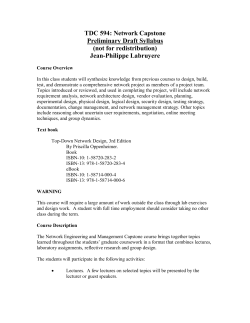
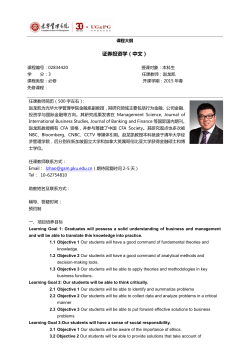
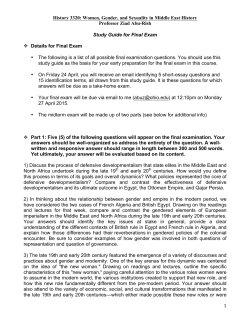
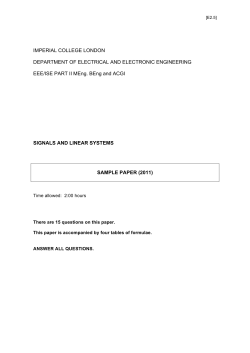
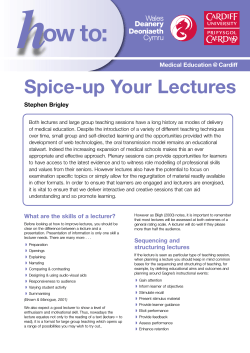




![HOME TREATMENT OF BPPV: BRANDT-DAROFF EXERCISES [ ]](http://cdn1.abcdocz.com/store/data/000138030_1-95f56718c005f701249a339b29c2db3c-250x500.png)











